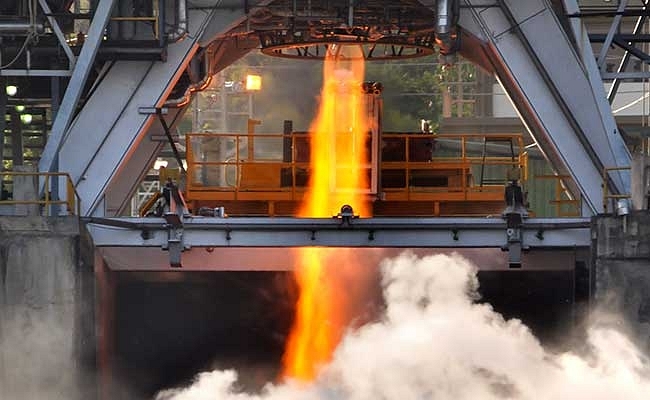Insta
India’s Largest Cryogenic Engine, Developed Indigenously By ISRO, Tested Successfully

ISRO’s cryogenic engine for the GSLV creates a lot more thrust than the solid fuel-pwered PSLV.
Days after it set a record by sending 104 satellites into space in one go on board a single rocket, the Indian Space Research Organisation (ISRO) has achieved another milestone. The organisation, on Saturday, successfully tested country’s largest cryogenic engine that it has indigenously developed.
Only Russia, USA, France, China, and Japan have the technology to manufacture such engines and India has now joined the elite group.
This engine, capable of lifting 4-ton class satellites into the geo-synchronous orbit, will be used on ISRO’s Geosynchronous Satellite Launch Vehicle (GSLV) Mark III rocket. The geo-synchronous orbit is an orbit where satellites can match Earth's rotation. Located 22,236 miles (35,786 kilometers) above Earth's equator, this orbit is the most suitable site for monitoring weather, communications and surveillance.
The organisation is now set to test GSLV Mark III rocket which will be powered by this engine. The rocket is almost 50 meters high and weighs 414 tons. It was developed indigenously after Russia, under pressure from the United States in the late 1980s, refused to transfer India the technology requited to build such engines.
Support Swarajya's 50 Ground Reports Project & Sponsor A Story
Every general election Swarajya does a 50 ground reports project.
Aimed only at serious readers and those who appreciate the nuances of political undercurrents, the project provides a sense of India's electoral landscape. As you know, these reports are produced after considerable investment of travel, time and effort on the ground.
This time too we've kicked off the project in style and have covered over 30 constituencies already. If you're someone who appreciates such work and have enjoyed our coverage please consider sponsoring a ground report for just Rs 2999 to Rs 19,999 - it goes a long way in helping us produce more quality reportage.
You can also back this project by becoming a subscriber for as little as Rs 999 - so do click on this links and choose a plan that suits you and back us.
Click below to contribute.
Latest